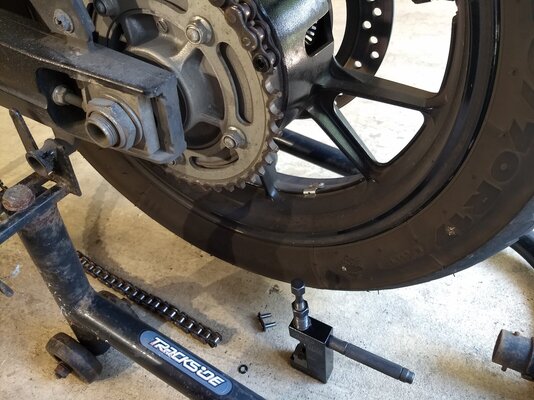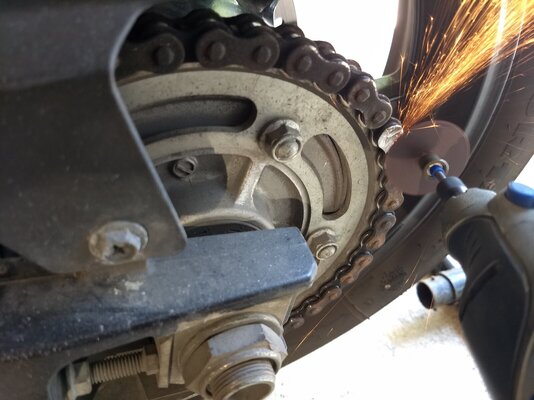this issue used to raise it's ugly head from tyme to tyme when i was still riding
one component many fail to understand is how to properly ADJUST a chain
a huge number of folks experience premature bearing and seal issues along w/ short life of their chains due to improper chain tension
the centers of the counter shaft, the swing arm pivot bolt and axle MUST be lined up in a straight line to measure proper ADJUSTMENT for each individual skoot
this process involves either removing the rear shock(s) or or using a ratchet strap to raise the rear axle to line them up(note string)
the rear tire needs to be raised to do this
once alignment is achieved the axle needs to be adjusted to where the chain is just snug not taught and the chain actually lines up on the front and rear sprockets
getting down on your knees and sighting fwd on the top of the chain is the 1st step
once it appears straight lay a straight edge on it or pull a string to make sure
now tighten/torque your axle nut to specs
you have just adjusted YOUR chain
release the strap/replace the suspension to the fully extended/relaxed state and take the jack stands/box from under the skoot
lean the skoot onto the side stand or center stand whichever is appropriate for YOUR skoot
now neasure the upward deflection in the center of the bottom of the chain from totally relaxed to snug
you have just determined how much slack in the relaxed chain equals properly adjusted
adjusting YOUR chain can now be done w/o going thru all this monkey motion ... just by checking the slack
the only force on a properly adjusted chain is the torque applied by the engine not the leverage or jerking applied due to improper adjustment a/o swing arm stretching
this process must be done every time a drive line component(chain a/o sprocket
) gets changed
the WEE uses(or at least mine did) an endless chain and proper/special tools are required to replace it
now back to your lube arguement which i shant enter into at this time
BON CHANCE
sw



 Feel free to hang out and lurk as long as you like. However, we would like to encourage you to
Feel free to hang out and lurk as long as you like. However, we would like to encourage you to  ).
).

